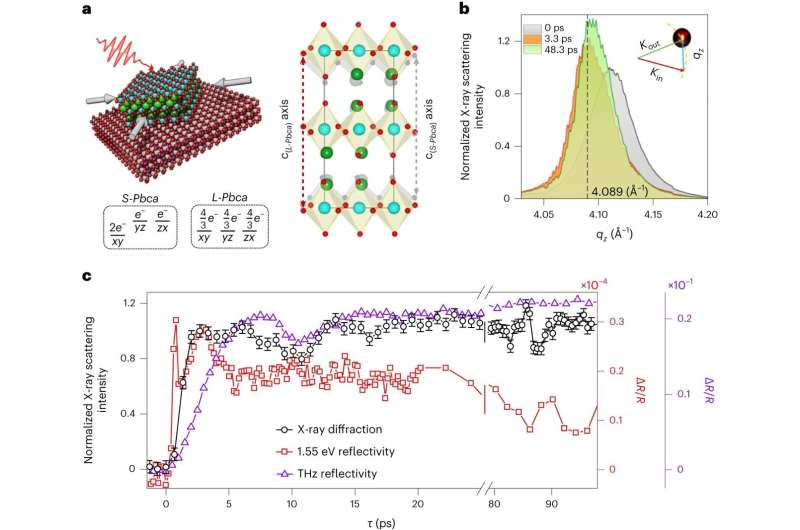This article has been reviewed according to Science X's editorial process and policies. Editors have highlighted the following attributes while ensuring the content's credibility:
fact-checked
peer-reviewed publication
trusted source
proofread
Surprise physics in insulating material offer path for faster tech

Researchers led by Cornell have discovered an unusual phenomenon in a metal-insulating material, providing valuable insights for the design of materials with new properties by way of faster switching between states of matter.
Mott insulators are a family of materials with unique electronic properties, including ones that can be manipulated by stimuli such as light. The origin of the unique properties is not fully understood, partly due to the challenging task of imaging the material's nanostructures in real-space and capturing how these structures undergo phase changes in as fast as a trillionth of a second.
A new study published in Nature Physics unraveled the physics of the Mott insulator, Ca2RuO4, as it was stimulated with a laser. In unprecedented detail, researchers observed interactions between the material's electrons and underlying lattice structure, using ultrafast X-ray pulses to capture "snapshots" of structural changes in the Ca2RuO4 within critical picoseconds after excitation with the laser.
The results were unexpected—electronic rearrangements are generically faster than lattice ones, but the opposite was observed in the experiment.
"Typically, the fast electrons respond to stimuli and drag the slower atoms with them," said lead author Anita Verma, postdoctoral scholar in materials science and engineering. "What we found in this work is unusual: The atoms responded faster than electrons."
While researchers aren't sure why the atomic lattice can move so quickly, one hypothesis is the material's nanotexture gives it nucleation points that assist with rearranging the lattice, similar to how supercooled ice begins to form quickest around an impurity in water.
The research builds on a 2023 paper in which Andrej Singer, senior author and assistant professor in materials science and engineering, and other scientists used high-powered X-rays, phase-retrieval algorithms and machine learning to gain a real-space visualization of the same material at the nanoscale.
"Combining the two experiments gave us this insight that in some materials like this one, we can switch phases very fast—on the order of 100 times faster than in other materials that don't have this texture," Singer said. "We are hopeful that this effect is a general pathway to speed up switching and result in some interesting applications down the road."
Singer said that in some Mott insulators, applications include developing materials that are transparent in their insulating state and then quickly become opaque once excited into their metallic state. The underlying physics could also have implications for future, faster electronics.
Singer's research group plans to continue using the same imaging techniques to investigate new phases of matter that are created when nanotextured thin-films are excited with external stimuli.
More information: Anita Verma et al, Picosecond volume expansion drives a later-time insulator–metal transition in a nano-textured Mott insulator, Nature Physics (2024). DOI: 10.1038/s41567-024-02396-1
Journal information: Nature Physics
Provided by Cornell University



















